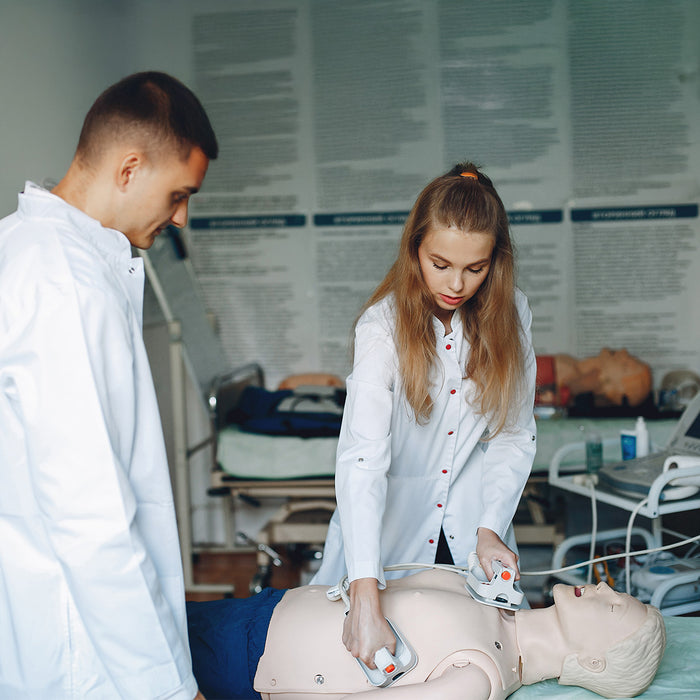
Basic Life Support (BLS) and BBP - 10 Person Onsite Group Training
Different Group Sizes?
Please Call +1-800-954-4233 or email sales@vitalaed.com
The BLS and BBP class trains participants to perform life-saving interventions for cardiac arrest, respiratory emergencies, and choking, while also educating them on preventing and managing exposure to bloodborne pathogens (e.g., hepatitis B, hepatitis C, HIV). It combines BLS skills with OSHA-compliant bloodborne pathogens training to ensure workplace safety and emergency response competency.
- Healthcare Professionals: Nurses, doctors, paramedics, medical assistants, and other clinical staff
- First Responders: EMTs, firefighters, police officers
- Other Professionals: Childcare providers, workplace safety officers, or anyone with potential occupational exposure to blood or bodily fluids
Prerequisites: No prior medical experience required for BLS; participants should be physically capable of performing CPR (involves kneeling and applying force). Basic knowledge of workplace safety is helpful for BBP but not mandatory.
- Full Course: 4–6 hours (BLS: ~2–4 hours, BBP: ~1–2 hours)
- Renewal/Recertification: 2–4 hours (BLS: ~1–2 hours, BBP: ~1 hour)
- Blended Learning: Online coursework (BLS: 2–3 hours, BBP: 1–1.5 hours) + in-person skills session (BLS: 1–2 hours, BBP: optional)
- In-Person: Instructor-led training with hands-on CPR practice, AED trainers, and BBP discussions or demonstrations
- Blended Learning: Online modules for theory (both BLS and BBP), followed by in-person skills testing for BLS and optional BBP review
- Interactive: Includes videos, manikin practice, scenario-based simulations, and quizzes
-
BLS Component:
- Chain of Survival and emergency recognition
- Adult, child, and infant CPR techniques
- AED use and pad placement for adults and children
- Choking relief for all age groups
- Team dynamics in resuscitation (for healthcare providers)
-
BBP Component:
- Understanding bloodborne pathogens and transmission methods
- Use of PPE and safe work practices
- Response to exposure incidents and reporting protocols
- Overview of OSHA's Bloodborne Pathogens Standard
- BLS: CPR practice on manikins, AED trainer use, choking relief simulations
- BBP: (if included) PPE demonstrations, sharps disposal, cleaning procedures, and incident response role-play
-
BLS:
- Skills testing in CPR, AED use, and choking relief
- Optional written exam (e.g., AHA requires 84% or higher)
- BLS certification card valid for 2 years
-
BBP:
- Knowledge quiz (passing score typically 70%+)
- Skills evaluation if in-person (e.g., PPE use)
- BBP certification valid for 1 year (per OSHA)
-
BLS:
- Recognize cardiac arrest, respiratory failure, and choking
- Perform high-quality CPR for all age groups
- Use an AED correctly
- Perform choking relief
- Collaborate in team-based resuscitation (for healthcare providers)
-
BBP:
- Identify bloodborne pathogens and transmission risks
- Apply standard precautions, PPE, and safe work practices
- Respond appropriately to exposure incidents
- Understand OSHA BBP Standard and workplace responsibilities






